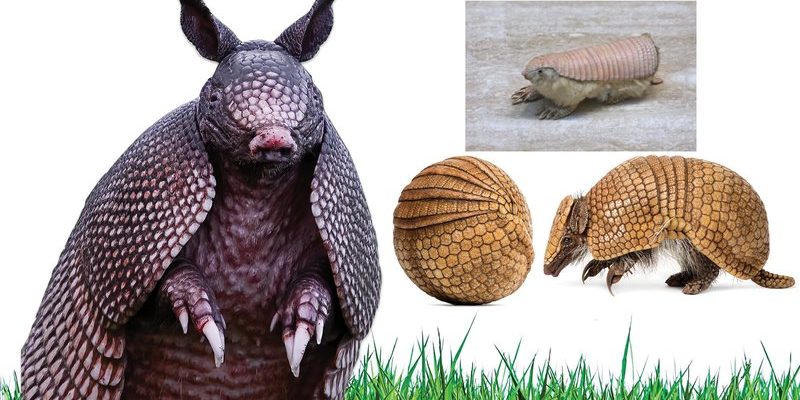![Comparing The Armadillo Vs. [Similar Species]](https://gudri.com/wp-content/uploads/2025/06/Comparing_The_Armadillo_Vs___Similar_Species__image_0.jpg)
Let’s think of it this way: if the armadillo is the armored knight of the animal kingdom, the anteater is the gentle, long-snouted forager. Both have adapted to their environments in ways that help them survive. But what makes them tick, and how do they differ? Grab a cup of coffee and let’s dive into the fascinating world of these two mammals.
Physical Appearance: A Shell vs. A Snout
When you look at an armadillo, the first thing you notice is its unique armor-like shell. This shell is made of bony plates covered in skin, providing protection against predators. Think of it as a built-in safety feature! Most armadillos are small, around the size of a cat, but some can grow quite a bit larger. The nine-banded armadillo is the most common and is known for its distinctive bands that give it flexibility while retaining its hard shell.
On the flip side, the anteater is all about that long snout. This feature might look a bit comical, but it’s a powerhouse for feeding. Anteaters have long claws and elongated tongues—perfect for slurping up ants and termites. Their fur can vary in color, mostly from gray to brown, and they have a more slender, graceful appearance compared to the stout armadillo. Overall, while both animals might capture your attention, their physical designs serve very different purposes.
Dietary Habits: Insectivores Unite
Here’s the thing: both armadillos and anteaters share a taste for insects, but they go about it differently. Armadillos are opportunistic eaters. They dine on insects, but also enjoy fruits, plants, and even small vertebrates. An armadillo’s sense of smell is exceptional, allowing it to dig in the ground to find its next meal. You might say they have a little bit of a “jack-of-all-trades” approach to dining.
Anteaters, on the other hand, have a very focused diet. They’re almost like specialists in the insect world, relying almost entirely on ants and termites. When it comes to feeding, they simply sniff out an anthill, dig in with their powerful claws, and use their long tongues to feast. This specialized diet shapes their behavior and habitats, as they need to be in areas rich with their favorite bugs.
Habitats: Where Do They Call Home?
Now, let’s talk about where each of these creatures hangs out. Armadillos typically prefer warm environments and can be found in places like grasslands, forests, and even scrublands. They’re known to be quite adaptable and can thrive in various regions, including urban areas. It’s not unusual to spot one ambling along your backyard at dusk.
Anteaters are a bit more particular about their homes. They prefer savannas and tropical rainforests, where materials for building their nests are abundant. This preference for specific habitats shapes their population distribution. Unfortunately, deforestation has made life challenging for them, but they tend to stick around areas where their food sources remain plentiful.
Behavior: Solitary Lives and Unique Skills
If you observe an armadillo in action, you’ll notice it’s a bit of a lone wolf. These creatures are mostly solitary and tend to go about their business at night, making them nocturnal. When threatened, they can curl up into a ball—yes, just like a protective little ball of armor. This behavior is a great defense mechanism, allowing them to stay safe from predators.
Anteaters, too, are generally solitary. But they display interesting behaviors, especially during feeding. They can consume thousands of ants and termites in a single day, often using their keen sense of smell to locate their favorite meals. You might find them wandering through their habitat, taking their sweet time as they hunt for food. Unlike armadillos, they don’t curl up to defend themselves, preferring to use their strength and the surprise of their long claws to ward off threats.
Reproduction: Raising the Next Generation
When it comes to family life, both armadillos and anteaters have their ways of raising their young. Armadillos typically have a gestation period of around two to five months, depending on the species. They usually give birth to a few young, which are born with soft shells that harden over time. An armadillo mother will take care of her young until they are big enough to fend for themselves, often teaching them the ropes of digging and foraging.
Anteaters, on the other hand, have a longer gestation period of about 190 days. A mother anteater usually gives birth to just one pup, which will ride on her back for a while to stay safe while she forages. This cozy method of transportation not only keeps the pup safe but also helps it learn vital survival skills.
Conservation Status: Challenges They Face
In the big picture, both armadillos and anteaters face challenges in the wild. Habitat loss, primarily due to human activity, poses significant threats to their populations. Armadillos are more adaptable but still succumb to urban development and road incidents. Conservation measures can help protect their habitats and educate communities about the importance of these creatures.
Anteaters, however, are more vulnerable. Many species are considered endangered or threatened. Deforestation, climate change, and poaching are all risks that make their future uncertain. Efforts to protect their habitats and establish wildlife corridors can help ensure these animals continue to roam the Earth.
Final Thoughts: A Tale of Two Creatures
So, when you compare the armadillo and the anteater, you discover two fascinating creatures that play unique roles in our ecosystems. From their distinct diets and habitats to their quirky behaviors and current challenges, both deserve our respect and protection.
In the great tapestry of nature, every thread counts, and understanding the differences between these creatures can inspire us to cherish the little things in life. Whether you’re an animal enthusiast or simply curious about the world around you, appreciating the armadillo and the anteater adds a little more color to your understanding of nature. And let’s be real, who wouldn’t want to learn more about these intriguing, armored critters?

